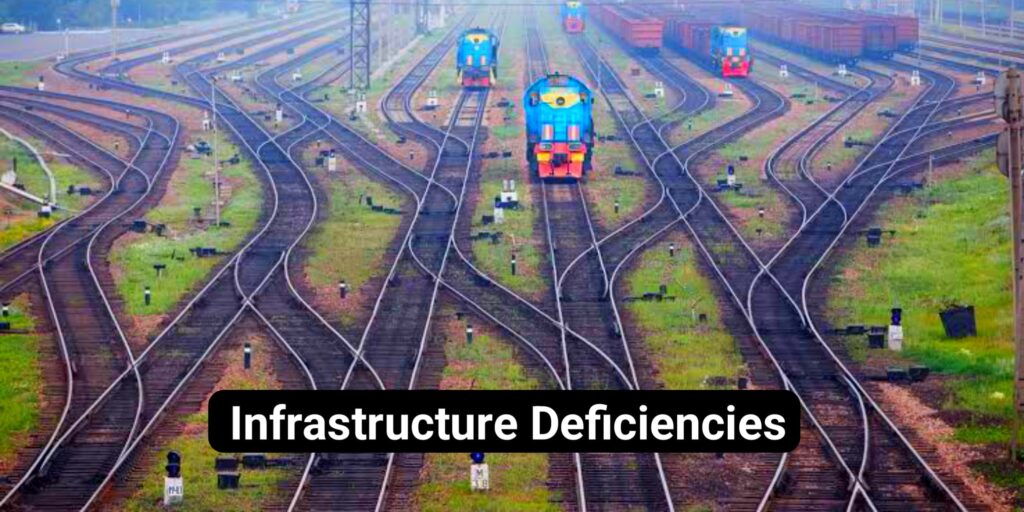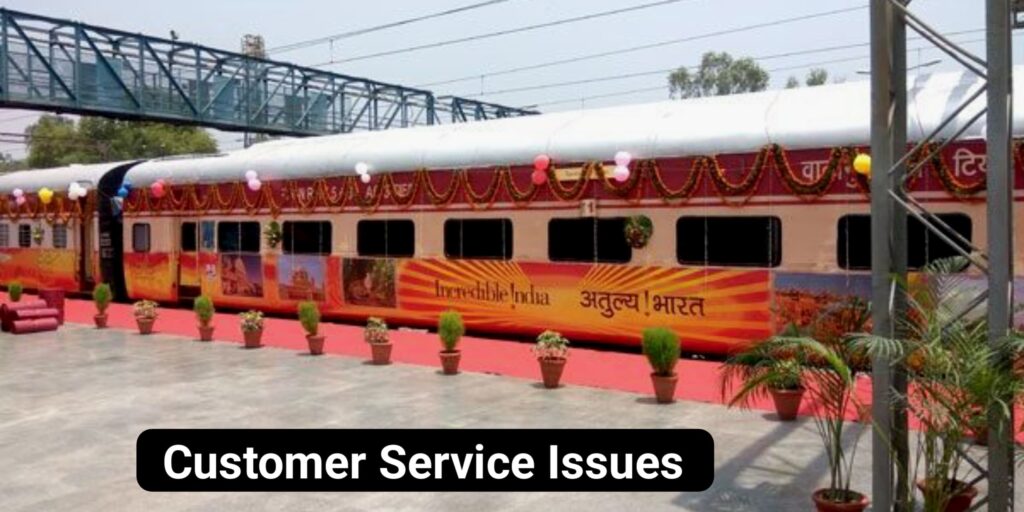What is the Problem in Indian Railways Today?
Indian Railways is a significant aspect of railway-connected economies in the world and is backed by millions of people in India. However, despite its importance there are numerous challenges that hinder the organization’s efficiency, safety and quality of the services it offers. In this article, let us discuss major problems that has beset the rail transport system in India, the Indian Railways.
1. Infrastructure Deficiencies
Undoubtedly among the current major issues the problem of infrastructure deterioration should be mentioned. A high percentage of railway tracks and bridges is old, ranging up to three decades, and many of them needs repairs or rebuilding. These are important to maintain because broken up track work results in accidents, delays and sometimes derailment. The corresponding investment in infrastructure improvements today is insufficient to the rate of expansion in the rail service requirements.

Moreover, absence of updated signaling systems or technology contributes towards time extension. For now, most of the signaling technology applied across the different regions of the network is archaic, thereby promoting a highly inefficient system and vulnerability to human blunders. Applying best-in-class systems for signaling can really promote higher safety levels and operational performance.
2. Overcrowding and Capacity Issues
It carries more than twenty three million passengers daily and hence is usually pulled to its peak very often. The issue of congestion has perhaps reached its worst in suburb rail networks where passengers travel to and from work in the overcrowded trains. This overcrowding also comes with a variety of considerations such as density, which also interferes with passenger safety during fully packed commute times.

However, governmental actions cause more pressure on the already tensed network since more freight traffic loads the network. It challenges their schedules even more by frequently intersecting with the freight routes with resultant delays. To eliminate capacity problems, there is the need to develop tracks, propose a new train, and sort the timetable.
3. Safety Concerns
A peculiar issue that has been characteristic of the Indian Railways is safety. It is noteworthy, however, that although much progress has been made in preventing train mishaps, including accidents, derailments and collisions, they continue to happen rarely but sadly with great intensity. Compounding factors that have persisted include the following; safety policy and practices are outdated, poor maintenance of the rolling stock, and inadequate staff training.

Modern technologies like automatic train protection systems in the railway networks have been implemented slowly, and as of now, numerous areas of the railway infrastructure still use primitive safety solutions. To tackle these problems it is important to invest in technology which also means to focus on safety at the cultural level in the entire organization.
4. Financial Challenges
Indian Railways work on a small profit margin and many times they run a operational loses. Even though the government heavily subsidises some PCTech businesses the operating costs such as maintenance, operations as well as new structures place the government under a lot of pressure. Over the past few years, the outbreak of the pandemic has added to these financial difficulties that affect the organisation’s revenue from passenger fares.

However, there is a major weakness that stem from relying on freight services as the major source of revenue. Freight revenue fluctuates with the economy and any disturbances in supply chains lead to instabilities in the company’s financial base. It almost takes half of Indian Railways’ budgets to make up for the losses incurred by the subsidised fares, To offset this, Indian Railways needs to find more ways to earn its revenue including public-private partnership, better tourism services and modernisation of stations.
5. Customer Service Issues
Another concern arising on Indian Railways is the bitter passenger experience. As most people like it, there are actually so many areas where customer service can be enhanced inasmuch as cleanliness, hygiene, and food quality and punctuality among others are concerned. This is especially true in cases where rail bound transport is the only means of transport needed in daily use or business among the passengers.

The online booking system may be efficient but it also can be a headache and filled with errors. As for the passengers, boosting the quality of the digital services as well as improving the ways of engaging with the customers can have a great positive impacts on the transport experience.
6. Environmental Concerns
Unfortunately, Indian Railways is one of the largest emitters of greenhouse gases since it is one of the major means of transport. The use of resources such as fossil fuels in locomotives makes emissions of air contaminates and greenhouse gases inevitable. For the past couple of years, there has been a drive to electric and employ renewable energy to reduce the effects on environment. But the speed of this transition should increase.

Developing bio-toilets and waste disposal system, and using energy efficient train helps Indian Railways to bring down their environmental impact to a minimum level. In addition, the usage of green technologies has a positive effect on operations and on the organisation ability to attract a new type of traveller, the environmentally conscious one.
7. Bureaucratic Inefficiencies
Unfortunately like many large organizations Indian Railways incurs the consequences of bureaucratic slowness. Implementation, in particular decision making, is often bureaucratic, which is not ideal for timely response or new initiatives. This organisational structure may also demotivate subordinates, unresponsive to the challenges on the ground, by suppressing their creativity and initiative.
Concerning this, Indian Railways needs not only a higher level of centralization but also centralization of decision-making processes, and provide local managers with powers to solve short-term problems. Efficient decision-making, as a result, removes many layers of bureaucracy that may slow down the evolution of change and development implementations.
Conclusion
To sum it all, the current crises encountered at the Indian Railways’ authorities level can be deemed a complex of issues that cannot be solved separately from one another. They range from infrastructure problems and overcrowding, safety issues and bureaucratic problems and every one of those challenges links with another one and needs to be addressed.
Although the government has begun some reform and investment processes in recent years, such problems are quite large; they need continuous political support and new measures. Through understanding and adaptation of modernisation, safety, customer relations and concerns for the environment, Indian Railways can aspire not only to bring a change organisationally but also to regain the faith and support of the public in this vital railway system.
Considering the Indian Railways as one of the key emerging economies of India, the rejuvenation for passengers serves not only, but also he economy. With collective and analytical approach and planning, Indian Railways can easily overcome its current problems and remain an important part of the lives of millions of Indians for ages.

